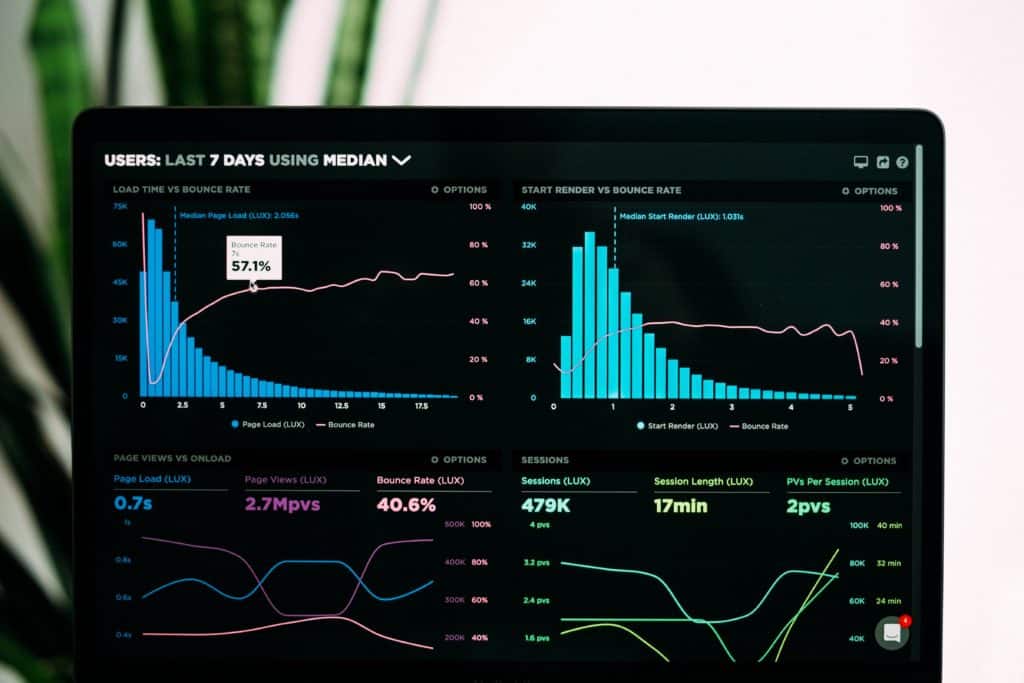Conversion rate optimization or “CRO” is the strategic method of improving a website to encourage a higher percentage of visitors to take an ideal action when they visit the site. For example, a web page can be designed and set up in a way that makes it more likely for the visitor to subscribe to an email list, fill out a contact form, buy a product, or book a call.
CRO is all about first understanding how the average internet user moves around a website. What do they like to see? What do they find confusing or distasteful? How do they interact with the website? What actions are they likely to take first, or even last? What could be stopping them from completing the goal that you– the business owner or web designer or both– set out?
Why Do Conversions Matter?
“Conversion” is a fancy word for when a potential client who visits your website completes the actual goal you want them to complete. Every site, page, and even the company has its own unique goals, both big and small.
Big conversions are things like (say, you’re an e-commerce website) a visitor placing an order or a client booking you to vend for a special event.
Smaller conversions, called Micro-conversions, include someone subscribing to your email list, downloading your free e-book, or following your blog. Many micro-conversions end up leading to big conversions if done well!

If you still want to better understand what exactly conversions are:
Macro-conversions:
- Setting an appointment
- Purchasing something from your website
- Scheduling a strategy call or quote
Micro-conversions:
- Creating a user account on your forum
- Signing up for your webinar
- Contacting you about a product on your page
Why Do Rates Matter When it Comes to Conversions?
The actual conversion rate equals the number of times the visitors of your website takes action on your goal, divided by the overall site traffic you have total.
Knowing your conversion rates matter because it helps you see which parts of your site, offering, and service is actually being successful for your business. If you sell a service, you can figure out your conversion rate by dividing the number of appointments made by the number of site visits. From there, if the rate isn’t ideal or bringing in an ROI, you can adjust and optimize accordingly.
It’s helpful to remember that CRO is actually not the same thing as SEO (search engine optimization) or “SEO conversion optimization”. Things like this usually involve search engines, paid ads, organic content marketing, and keywords.
Why Does Your Business Need CRO?
You should pay attention to CRO because it’s important to your growth! First of all, gaining traffic to your website can take a lot of hard work and cost a lot of money. Therefore, a better conversion rate means you will be getting a higher ROI (return on investment). This is a no brainer.
Additionally, optimizing conversion rates can help your overall website at keeping your audience’s attention. When things are simple, accessible, and you give visitors what they want, they are easily able to do more and take more action on your site.

CRO matters more than you know! It’s especially crucial to gear your CRO towards the customers you desire, not a general range of customers who won’t be loyal to your brand or company. Would you rather have 10,000 one-time customers who don’t really care about you? Or 1,000 loyal customers who feel you truly improve their life? 1,000 returning customers who are hungry for your product or service is much more sustainable than even 1 Million snackers.
How Does CRO Actually Work?
Now that you know what CRO actually is, you might be wondering where do I start?
Before you do get started on improving your CRO, you need to set out a list of priorities for your company. What projects are most important to you and your business? Prioritize which ones come first based on potential, importance, and ease (some call this the PIE method).
For a more detailed and ever-helpful way of learning the PIE method, check out this article by WiderFunnel.
Once you know the areas you’re first going to improve, strategize how your company will do it. If that involves hiring someone to be in charge of CRO, do that. If that involves getting your former web developer involved and improving some things, there you go.
Steps for CRO

Step 1: Do Some Research to Find Problem Areas
Many people assume if they simply copy what some other company is doing (and seems successful at it), then their conversion rates will automatically be optimized. However, this is not so! Each company has a unique identity, and therefore, a different “map” or how site visitors will interact with said company.
So first, do some research. What are the visitors of your site there for? What exactly are they doing? Look into analytics and data of how your site operates with users on it. Google Analytics is one of the best ways to observe the tangible facts and records of your website’s patterns.
Second, look at your pages and features. How do they dictate a user’s behavior on your site? Behavior analysis tools can give you some insight onto unwanted or cluttered features on your web pages so you can simplify and readjust to improve CRO.
Other things like surveys and site audits can give you key insights into what users on the internet like or dislike or expect on a website they want to buy from.
Step 2: Make an Educated Guess
After the research phase is done, you can form an educated guess on what can first and foremost improve. To increase conversions, what do your landing pages or web pages need first? With a conversion goal in place, you can explain what you learned from research and work your way up from there.
What change needs to be made based on the data?
What’s your main goal for the biggest area of improvement for overall user experience?
What is the reason behind the specific change to reach a higher desired action?
Other things like A/B testing or split testing can be helpful at this stage. This is because as changes will be made, you’ll be able to test out to end result of two different things and pick out which one worked best to use further in the future. (More on this later in this post!)

Step 3: Plan Out the Order of Required Changes
Find which exact pages on your site are not doing well at all. These are the pages that will need changes first in order to improve.
If you have a long list of pages, don’t be overwhelmed! Simply narrow down those pages to the most important ones with the highest valuable traffic. This includes either paid traffic through ads, landing pages, or product pages with higher-end calls to action.
Before optimizing away, remember not all pages are easily fixable or optimizable. Some pages can be more complicated than others, and others can seem simple but actually reqiure a lot of technical skill. For time’s sake, we recommend taking on the “easier” more important pages and working smoothly into the timely, more challenging pages.
Step 4: Testing and Retesting
Now that things are changing to be better optimized on your website, it’s time to run some tests to see into how– or if– they are actually improving CRO.
Why is testing important now? It helps you understand the change and how that change is doing at giving new conversions. Split testing or A/B testing is a way to compare two different web pages, accounts, or apps against each other so the better-performing one can be implemented for the benefit of the end goal.
Testing like this should have a specific run time that tracks performance, audience, data, and all that good stuff. At the end of each test, you will be able to see what is called “statistical significance”. Numbers speak louder than opinion in this case, so you might be surprised at which testing format does better.
All these things are merely starting tools to increase your website traffic, form case studies and reach your CRO goals. In the online marketing world, measuring conversion is more important than ever and it’s one piece of the PIE to get consistent clients and leads.
Need some guidance in improving your conversion rate optimization? Give us a call and we’ll discuss a list of ideas to help your biz!





